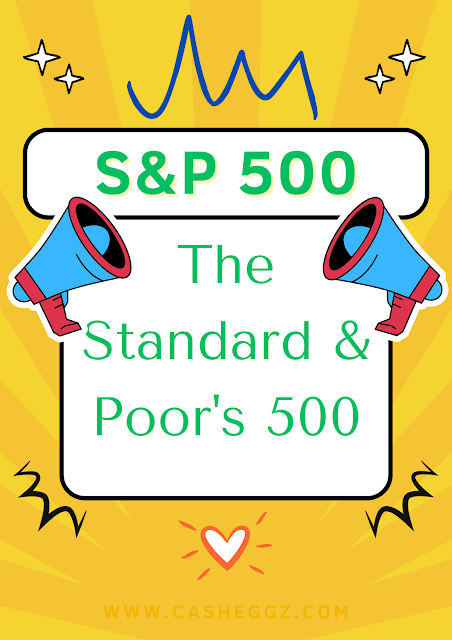Understanding the S&P 500 Index
As an equity investor, it is imperative to grasp the essence of the S&P 500 (Standard & Poor’s 500) index. This registered trademark, a product of the joint venture S&P Dow Jones Indices, meticulously comprises the 500 largest companies in the U.S. The S&P 500 stands as an unparalleled yardstick, offering profound insights into the collective performance of major corporations, and consequently, the broader stock market.
The Significance of the S&P 500
In the realm of equity analysis, the S&P 500 is not merely a numerical representation; it is a strategic benchmark against which the performance of investment portfolios is evaluated. Its significance lies in its role as a statistical measure, providing a comprehensive snapshot of America’s 500 largest stocks. This context is crucial for equity experts, as it serves as a foundation for discerning market trends and making informed investment decisions.
Market Capitalization Weighting
A cornerstone of understanding the S&P 500 lies in grasping its market capitalization weighting methodology. We should recognize the pivotal role played by market capitalization – determined by multiplying a company’s share price by its outstanding shares. This approach ensures that the index reflects the true influence of a company’s valuation on its overall performance, with giants like Apple and Amazon exerting more sway than relatively smaller entities.
Valuation Disparities in the Index
Despite the collective label of “500 large companies,” the S&P 500 harbors a spectrum of valuations. Notably, tech behemoths like Apple boasting market caps exceeding $1 trillion wield a significance over 200 times larger than relatively smaller counterparts such as Macy’s or Harley-Davidson. Recognizing this diversity is pivotal for equity experts, as it adds granularity to the analysis of the index’s performance.
Continuous Market Fluctuations
In the dynamic landscape of equity markets, the S&P 500 index stands as a fluid entity, subject to continuous fluctuations throughout the trading day. These movements, derived from performance-weighted market data of constituent companies, present an ever-evolving canvas for equity experts to navigate.
Company Weighting Formula and Calculation
Equity experts must grasp the intricate process of determining a company’s weight in the S&P 500 index. The calculation involves deriving a company’s market cap by multiplying its outstanding shares with the current share price. This market cap is then compared to the cumulative total of all S&P 500 components, allocating a weight that defines the company’s influence on the index.
Unveiling the S&P 500 Composition
The Multifaceted S&P 500 Composition
As an equity expert, the composition of the S&P 500 demands meticulous attention. Comprising 505 stocks issued by 500 different companies, the numerical incongruence arises from instances where certain companies issue multiple classes of stock. For instance, Alphabet Class C and Alphabet Class A stocks coexist within the index, exemplifying the complexity that equity experts navigate.
The Power Players: Top 10 Companies
A closer look at the top companies within the S&P 500 index, provides valuable insights for equity experts. This list, albeit subject to change, offers a snapshot of the dominant forces steering the index. Understanding the hierarchy and potential shifts in this sequence is paramount for effective equity analysis.
The Strategic Impetus of the S&P 500
The Utility of the S&P 500
We should acknowledge the pivotal role played by the S&P 500 as a market and economic indicator. The index’s broad representation, encompassing widely-owned companies, positions it as a reliable gauge for gauging market trends. Its coverage of approximately 80% of the U.S. stock market’s value underscores its utility as a strategic tool for investors.
S&P 500 vs. Dow Jones Industrial Average
Equity experts must discern the distinctions between major indices. Contrasting the S&P 500 with the Dow Jones Industrial Average, the former’s comprehensive approach, in contrast to the latter’s price-weighted methodology, offers a more holistic perspective. Additionally, the Dow’s exclusive listing of 30 companies excludes tech giants like Amazon and Alphabet, highlighting the nuanced considerations that shape equity analyses.
S&P 500 vs. Nasdaq Composite Index
Equity experts navigating the S&P 500 landscape must distinguish it from the Nasdaq Composite Index. While the Nasdaq skews towards technology stocks listed exclusively on the Nasdaq market, the S&P 500 embraces a mix of Nasdaq and NYSE stocks. This divergence, evident in their top-10 lists, underscores the tech-heavy nature of the Nasdaq, influencing its performance relative to the broader market.
S&P 500 vs. Russell Indexes
In the expansive universe of equity analysis, the S&P 500 shares the stage with the Russell Indexes. Equity experts keen on benchmarking the S&P 500 can draw parallels with the Russell 1000, a large-cap index that mirrors the former but encompasses 1,000 stocks. Recognizing these comparative benchmarks, such as the Russell 2000 representing small-cap U.S. stocks, adds layers of insight to equity analyses.
Navigating S&P 500 Investments
Investing in the S&P 500: Mutual Funds and ETFs
As an equity investor, exploring investment avenues in the S&P 500 requires a nuanced understanding of financial instruments. Investors can gain exposure to the index by investing in mutual funds or exchange-traded funds (ETFs) that passively track its composition. These investment vehicles, mirroring the index’s proportional weights, offer a streamlined approach for investors seeking diversified exposure.
The Endorsement of Warren Buffett
Equity experts cannot overlook the endorsement of legendary investor Warren Buffett, who extols the virtues of a low-cost S&P 500 index fund. Recognizing this recommendation is crucial, as it underscores the index’s historical annualized gains of 9% to 10%. Buffett’s perspective adds a layer of credibility to the S&P 500 as a viable investment avenue.
Is S&P 500 Investing Right for You?
While the index has historically delivered robust returns, some investors may possess the time, knowledge, and inclination to pursue active strategies. Equity experts must weigh these factors, recognizing that newer investors, in particular, may find the simplicity and effectiveness of S&P.

The S&P 500 comprises the 500 largest U.S. companies, offering a comprehensive view of market dynamics and serving as a benchmark for portfolio evaluation.
Market capitalization weighting emphasizes a company's valuation, giving larger companies more sway over the index's performance.
The formula involves determining a company's market cap by multiplying its outstanding shares by the current share price, then allocating weights based on this value relative to the total market cap.
Some companies issue multiple classes of stock, leading to 505 stocks issued by 500 different companies within the S&P 500.
Despite all being classified as "large companies," there is a wide range of valuations, with tech giants often having market caps over $1 trillion, significantly influencing the index.
The index's value fluctuates throughout the trading day based on real-time market data, offering a dynamic landscape for equity experts to navigate.
Covering approximately 80% of the U.S. stock market's value, the S&P 500 represents widely-owned companies, making it a reliable gauge for market trends.
The S&P 500 is not price-weighted and includes 500 companies, offering a more holistic view compared to the Dow, which lists 30 companies and uses a price-weighted approach.
The S&P 500 includes a mix of Nasdaq and NYSE stocks, while the Nasdaq Composite is tech-heavy and exclusively lists stocks on the Nasdaq market.
Investors can invest in the S&P 500 through mutual funds or exchange-traded funds (ETFs) that passively track the index, providing proportional ownership of its constituent stocks.
Buffett views S&P 500 funds as a solid investment due to their historical annualized gains of 9% to 10%, offering broad exposure with minimal cost.
While the S&P 500 historically delivers strong returns, individual investors should assess their time, knowledge, and inclination for active strategies. Newer investors may find it a convenient and effective starting point.
This article was authored by an individual, and the output has been generated by AI (Artificial Intelligence), so there’s a possibility that some data and content have been altered by the AI. If you have any feedback or queries, please feel free to contact us via email at casheggzinfo@gmail.com.



